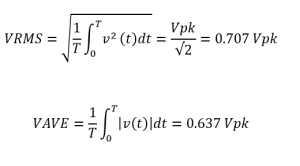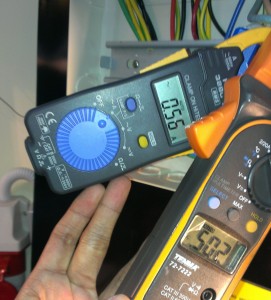There used to be a time whereby the price between a non-True RMS (aka Average Responding) and a True RMS meter/clamp is pretty significant; so much so that if one is just to measure voltage or current for checking if the circuit is ‘Live’ or not, one will go for the cheaper Non-True RMS device.
Recently, price difference have narrowed down quite a bit and in my opinion, one should just get a True RMS meter/clamp straight away.
Loads today are pretty much almost non-linear these days anyway.
For a pure sinusoidal wave;

Hence for an average responding meter, it will scale the rectified average of the ac waveform by 1.11.
This holds true only for pure sinusoidal waveform; which do not exist in the practical world.
The difference in reading can vary from between 5 and 40%, depending on what type of waveform that is being measured.
An example below shows a difference of about 10%. The load being measured was a combination of a couple of CFL and LED bulbs.
It is funny to me to see some contractors out there who uses a non True RMS meter/clamp to verify the readings obtained from their expensive PQ meters.
- True RMS vs Average Responding Clamp
*Besides True-RMS capability, one should also check for its Safety CAT category. This is an important safety consideration that should not be disregard.
